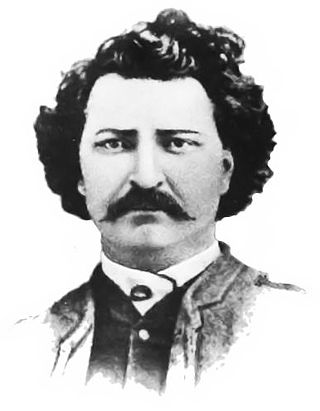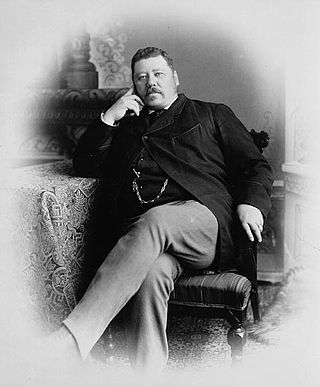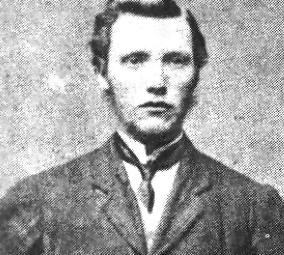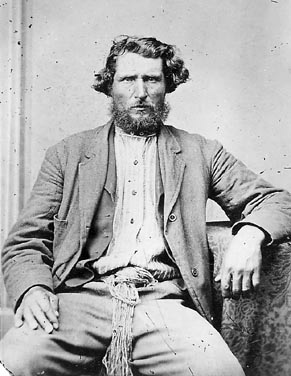Related Research Articles

Louis Riel was a Canadian politician, a founder of the province of Manitoba, and a political leader of the Métis people. He led two resistance movements against the Government of Canada and its first prime minister John A. Macdonald. Riel sought to defend Métis rights and identity as the Northwest Territories came progressively under the Canadian sphere of influence.

The Red River Colony, also known as Assiniboia, was a colonization project set up in 1811 by Thomas Douglas, 5th Earl of Selkirk, on 300,000 square kilometres (120,000 sq mi) of land in British North America. This land was granted to Douglas by the Hudson's Bay Company in the Selkirk Concession. It included portions of Rupert's Land, or the watershed of Hudson Bay, bounded on the north by the line of 52° N latitude roughly from the Assiniboine River east to Lake Winnipegosis. It then formed a line of 52° 30′ N latitude from Lake Winnipegosis to Lake Winnipeg, and by the Winnipeg River, Lake of the Woods and Rainy River.

Sir Adams George Archibald was a Canadian lawyer and politician, and a Father of Confederation. He was based in Nova Scotia for most of his career, though he also served as first Lieutenant Governor of Manitoba from 1870 to 1872.

The Red River Rebellion, also known as the Red River Resistance, Red River uprising, or First Riel Rebellion, was the sequence of events that led up to the 1869 establishment of a provisional government by Métis leader Louis Riel and his followers at the Red River Colony, in the early stages of establishing today's Canadian province of Manitoba. It had earlier been a territory called Rupert's Land and been under control of the Hudson's Bay Company before it was sold.

Events from the year 1870 in Canada.

Alfred Boyd was a politician in Manitoba, Canada, who is usually considered to have been the first premier of Manitoba (1870–1871) though he was not recognized by that title at the time and was not the real leader of the government. He is more correctly referred to as the first Provincial Secretary of Manitoba.

John Norquay was the fifth premier of Manitoba from 1878 to 1887. He was born near St. Andrews in what was then the Red River Colony, making him the first premier of Manitoba to have been born in the region. Norquay was also the first Indigenous Premier of a Canadian province, a title which is now honourarily held by Louis Riel.

Robert Atkinson Davis was a businessman and Manitoba politician who served as the fourth premier of Manitoba.

Henry Joseph Clarke, who sometimes used the middle names Hynes and O'Connell, was a lawyer and politician in Manitoba, Canada.

The Manitoba Act, 1870 is an act of the Parliament of Canada, and part of the Constitution of Canada, that provided for the admission of Manitoba as the fifth province of Canada.

Thomas Scott was an Irish Protestant who emigrated to Canada in 1863. While working as a labourer on the "Dawson Road Project", he moved on to Winnipeg where he met John Christian Schultz and fell under the influence of the Canadian Party. His political involvement in the Red River Settlement from then on led to his capture at Fort Garry where he was held hostage with others. On 4 March 1870 Scott was marched out of Fort Garry's east gate and was executed on the wall by the provisional government of the Red River Settlement led by Louis Riel.

Sir John Christian Schultz was a Manitoba politician and businessman. He was a member of the House of Commons of Canada from 1871 to 1882, a Senator from 1882 to 1888, and the fifth Lieutenant Governor of Manitoba from 1888 to 1895.

Francis Evans Cornish was a Canadian politician. He served as Mayor of London, Canada West, in the early 1860s, became the first Mayor of Winnipeg in 1874, and was for a time a member of the Legislative Assembly of Manitoba.
The 1870 Manitoba general election held on December 27, 1870, resulted in a victory for Lieutenant Governor Adams George Archibald's governing coalition. Archibald had previously been appointed as the province's Lieutenant Governor by George-Étienne Cartier, and promoted a model of "consensus government," which included members of the province's different ethnic, religious, and linguistic groups.

The Wolseley expedition was a military force authorized by Canadian Prime Minister John A. Macdonald to confront Louis Riel and the Métis in 1870, during the Red River Rebellion, at the Red River Colony in what is now the province of Manitoba. The expedition was also intended to counter American expansionist sentiments in northern border states. Leaving Toronto in May, the expedition arrived, after a three-month journey in arduous conditions, at Fort Garry on August 24. This extinguished Riel's provisional government and eradicated the threat of the American expansion into western Canada.

By the arrangements of the Canadian federation, Canada's monarchy operates in Manitoba as the core of the province's Westminster-style parliamentary democracy. As such, the Crown within Manitoba's jurisdiction is referred to as the Crown in Right of Manitoba, His Majesty in Right of Manitoba, or the King in Right of Manitoba. The Constitution Act, 1867, however, leaves many royal duties in Manitoba specifically assigned to the sovereign's viceroy, the lieutenant governor of Manitoba, whose direct participation in governance is limited by the conventional stipulations of constitutional monarchy.

The Province of Manitoba, similar to other Canadian provinces and territories, is governed through a Westminster-based parliamentary system. The Manitoba government's authority to conduct provincial affairs is derived from the Constitution of Canada, which divides legislative powers among the federal parliament and the provincial legislatures. Manitoba operates through three branches of government: the executive, the legislative, and the judicial. The executive branch—the Government of Manitoba—consists of the Executive Council and the Premier, who is the head of government and the President of the Executive Council. The legislative branch—the Manitoba Legislature—is composed of the Lieutenant Governor and the Legislative Assembly, which is composed of the 57 members (MLAs) elected to represent the people of Manitoba, as well as the Speaker, the Clerk, the Officers of the Legislative Assembly, and the employees of the legislative service.
Elzéar Goulet was a Métis leader in the Red River Colony, which later became the province of Manitoba, Canada. He was a supporter of Louis Riel's provisional government and was murdered by Canadian troops under the command of Col. Garnet Wolseley, after the suppression of the Red River Resistance.

Ambroise-Dydime Lépine was a Métis politician, farmer, and military leader under the command of Louis Riel during the Red River Rebellion of 1869–1870. He was tried and sentenced to death for his role in the execution of Thomas Scott, but his sentence was commuted to five years exile by the Governor General of Canada.
The Hon. Thomas Bunn was a Métis legislator, lawyer, negotiator, landowner, farmer, clerk of the court, and politician in Manitoba. He represented St. Clements from 1870 to 1874 in the Legislative Assembly of Manitoba. He helped usher in the Manitoba Act. He was Secretary of State in the Legislative Assembly of Assiniboia until it was overthrown by the John A. Macdonald government and dissolved eight months after it began. Thomas Bunn was English-Metis to Louis Riel's French, and the two men didn't always agree but were staunch in their resolve to protect the rights of the Metis people. Thomas Bunn made the first motion in the Assembly of Assiniboia.
References
- ↑ Schultz, Sir John Christian. "Dictionary of Canadian Biography" . Retrieved 2015-05-27.
- ↑ Foster, William Alexander. "Dictionary of Canadian Biography" . Retrieved 2015-05-27.